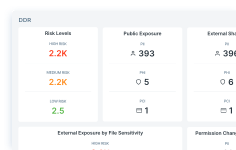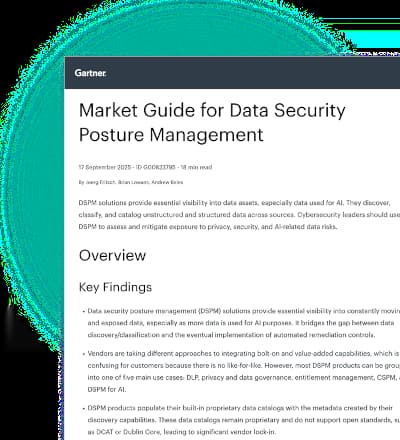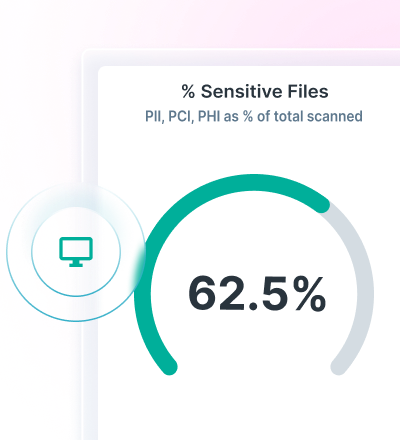Transform Your Finance Organization with Forcepoint Data Security and Generative AI
0 min read

Kevin Oliveira
Artificial intelligence (AI) has emerged as a disruptive force across industries. The financial sector is no exception. Its impact on financial professionals will be significant, bringing forth a range of changes that warrant exploration. Gartner® sees the coming change this way"
"As AI is adopted, the nature of people’s tasks and required skill sets change."
"Early adopters of analytics technologies, data analysts, now need technical skills to handle advanced algorithms and machine learning models."
"Graphic designers have moved to higher level conceptualization and design, while AI-powered tools handle the repetitive production tasks previously the main part of a graphic designer’s work."
Financial analysts take on higher-level tasks such as financial planning and strategy as routine tasks are automated.
AI is ideal in enhancing automation and efficiency, decision-making capabilities and collaboration of financial professionals in organizations. There remains the very important challenge to address—keeping financial data secure. In these areas, here’s a quick look at the opportunities that generative AI brings:
- Automation and Efficiency:
AI systems are already starting to impact financial operations by automating routine and repetitive tasks, such as certain types of research. This allows financial professionals to concentrate on strategic responsibilities, such as financial planning and strategy. By relieving them of some of the manual work, AI enhances the efficiency and productivity of financial professionals.
- Decision Support:
AI's capacity to provide decision support is one of its most significant advantages it offers financial professionals. AI-powered tools can analyze vast volumes of financial data, identify patterns, all in service of generating valuable insights and recommendations. This empowers financial professionals to make informed, data-driven decisions faster, resulting in improved outcomes and performance. Leveraging advanced algorithms and machine learning models, financial professionals can elevate their decision-making capabilities with AI as their ally.
- Collaboration and Augmentation:
AI systems act as assistants and support tools, augmenting the capabilities of financial professionals in the process. True collaboration results in a symbiotic relationship, where financial professionals work in conjunction with AI algorithms to achieve greater outcomes, all while improving efficiency. Establishing collaborative practices that optimize the strengths of both human and machine will foster new levels of innovation and productivity.
Considerations and Challenges:
While AI offers numerous benefits to financial professionals, organizations must consider the serious issue of keeping sensitive financial information safe. Particularly where financial information could be impacting public markets, data has to be carefully handled and distributed publicly in a way that is responsible. Forcepoint Data Security provides a portfolio of technologies that enables organizations to secure sensitive financial data while still enabling financial professionals to take advantage of the enormous efficiencies that can be gained through generative AI.
Check out this video where Jordan Havranek, Principal Sales Engineer at Forcepoint, demonstrates a specific use case (preparing for a public quarterly report) that shows how ChatGPT can bring automation, efficiency, and collaboration—augmenting the capabilities of the financial professional while keeping data secure.
For more examples like this where Forcepoint keeps data secure while using AI:
- Check out this Forcepoint Tech Talk YouTube playlist
- See this AI webpage for more information or
- Click to talk to an expert.
###
Gartner, Uncover the Hidden Impact of AI Automation on Your Organization, Jo Karajanov, Mary Mesaglio, June 15, 2023
GARTNER is a registered trademark and service mark of Gartner, Inc. and/or its affiliates in the U.S. and internationally and is used herein with permission. All rights reserved.

Kevin Oliveira
Read more articles by Kevin OliveiraKevin serves as Senior Product Marketing Manager for Forcepoint’s Data Security products and solutions. He has over 20 years experience helping enterprises with their data and security initiatives with leadership positions at Dell EMC and IBM.
- DLP for ChatGPT and Generative AI
In the Article
- DLP for ChatGPT and Generative AILearn More
X-Labs
Get insight, analysis & news straight to your inbox

To the Point
Cybersecurity
A Podcast covering latest trends and topics in the world of cybersecurity
Listen Now









